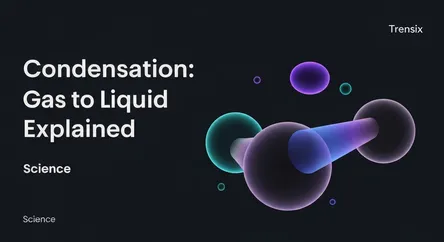Science
Condensation: Gas to Liquid Explained

Learn about condensation, the scientific process of gas changing to a liquid, and its vital role in the water cycle and our everyday lives.
What is it?
Condensation is the physical process where matter changes from a gaseous state to a liquid state. It is the opposite of evaporation. This commonly occurs when a vapor is cooled to its dew point, the temperature at which it can no longer hold all of its moisture. A familiar example is seeing water droplets form on the outside of a cold glass on a humid day. The water vapor in the warmer air comes into contact with the cold surface, cools down, and transforms into liquid water. This same principle is responsible for phenomena like morning dew on grass and fog.
Why is it trending?
Condensation is a fundamental concept in science, always relevant due to its critical role in Earth's systems. It is the process behind cloud formation, which is essential for the water cycle and distributing water across the planet as precipitation. Technologically, understanding condensation is crucial for innovations in many fields. Current research focuses on harnessing condensation for water harvesting in arid regions, developing more efficient power plant condensers, creating advanced de-icing materials, and improving air conditioning and dehumidification systems.
How does it affect people?
Condensation has a significant impact on daily life. Its role in the water cycle is essential for providing the fresh water necessary for drinking and agriculture. However, excessive condensation indoors can be problematic. It can lead to dampness on walls, which causes damage to materials like wood and plaster. This moisture creates an ideal environment for the growth of mold and mildew, which can release spores and allergens into the air, potentially causing respiratory issues and other health problems, especially in children and the elderly.